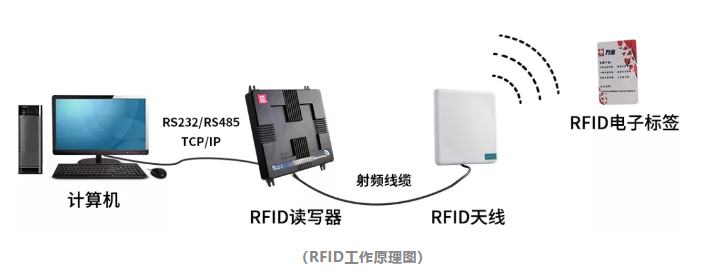Technology Exchange
Analysis on the precautions for purchasing RFID UHF tags
The definition and coverage of UHF RFID frequency bands varies globally. For example, China's frequency bands are 840~844MHz and 920~924MHz, EU frequency bands are between 865MHz~868MHz, Japanese frequency bands are between 952MHz~954MHz, Hong Kong, Thailand, Singapore 920MHz~925MHz, The frequency band of the United States, Canada, Puerto Rico, Mexico, and South America is 902MHz~928MHz.
RFID UHF tags have the ability to read multiple tags at one time, have long identification distances, fast data transmission speed, and reliability. It has the advantages of performance, resistance to harsh outdoor environment, etc. It can be used for asset management, production line management, supply chain management, warehousing, anti-counterfeiting traceability of various items (such as tobacco, alcohol, medicine, etc.), retail, vehicle management, etc.


At present, the common UHF RFID air interface protocols popular in China are 6C and 6D standards, namely ISO/IEC 18000-6C (63), ISO/IEC 18000-6D (64), and my country officially implemented it in May 2014 The national standard GB/T 29768-2013.
So what matters should be paid attention to when purchasing RFID UHF electronic tags? Come with the RFID special label manufacturer to use IOT to understand the common problems when purchasing:
1. Will RFID UHF tags be affected by environmental issues during application?
Especially for UHF RFID products, metals and liquids have a greater impact on its performance. Therefore, whether the application environment is metal or non-metal, liquid or plastic, glass, wood, etc., are the primary considerations.
The direct influence of raw materials on the radio frequency signal: metal has an influence on the radio frequency signal of the RFID tag. When used in metal objects or working environments with a lot of metal influence, you must use ultra-high frequency anti-metal electronic tags to reduce metal-to-tag data The influence of the signal facilitates the normal use of RFID electronic tags.
The performance of UHF RFID tags is easily affected by the environment. If it is necessary to determine whether the product is suitable for the actual application environment, in the early test stage, the performance must be directly used for the object test to have reference value.
2. Will it be affected by distance during RFID UHF tag identification?
RFID UHF tags with different chips and antennas have different reading distances. Try to read data within the readable range. The reading distance is also directly related to the reader and antenna. It is necessary to clarify the tag and reader antenna The installation position and angle relationship. At the same time, parameters such as power selection, antenna gain, polarization mode, and radiation angle are all categories that need to be considered.
In the entire RFID system, every detail may affect the actual reading distance, and whether it can meet the project requirements, the length of the feeder (the cable connecting the antenna and the reader) should be considered when selecting the model. Different reading distances can choose high, low frequency and ultra high frequency electronic tag products with different chips and different frequencies.
3. How to choose the size of RFID UHF tags?
In our past experience of many projects, customers often hope that the label size is small, so that it is beautiful and easy to install, and it can also be used for embedded processing applications. Taking the core IoT RFID UHF ceramic anti-metal tag as an example, the size can be 2.6*2.6mm, which is very convenient for embedded tool management. However, not all application scenarios need to choose a small-size electronic label, and the size of the label is also one of the main factors that determine the performance of the label. Generally speaking, the larger the size, the better the label performance can be designed, and the smaller the size of the label, the stricter the requirements on the production process. Different manufacturers, models and specifications, integrated IC production process and antenna Different manufacturing technologies will have certain differences in quality and price. Consumers should choose according to actual usage and cost budget. You can consult the manufacturer's business personnel when selecting the type, and select the appropriate label size.
4. What are the other considerations when purchasing RFID UHF tags?
In addition, when purchasing, there are other detailed considerations to pay attention to, such as: Does the label have environmental reliability requirements such as temperature and humidity resistance? How much data capacity does the label need to write? How many tags need to be read at one time? Do you need a supporting system to implement management functions? Wait...Only by understanding the application scenario requirements of RFID tags as much as possible, can we quickly choose electronic tag products suitable for ourselves when purchasing. For more RFID tags, NFC electronic tags, NFC anti-counterfeiting tags, RFID special tags and other related introductions, please pay attention to the technology exchanges with core IoT.
In addition, when purchasing, there are other detailed considerations to pay attention to, such as: Does the label have environmental reliability requirements such as temperature and humidity resistance? How much data capacity does the label need to write? How many tags need to be read at one time? Do you need a supporting system to implement management functions? Wait...Only by understanding the application scenario requirements of RFID tags as much as possible, can we quickly choose electronic tag products suitable for ourselves when purchasing. For more RFID tags, NFC electronic tags, NFC anti-counterfeiting tags, RFID special tags and other related introductions, please pay attention to the technology exchanges with core IoT.
上一篇:What are the application advantages of RFID book file management tags? 下一篇:What are the common functions of RFID book file management system?
Related news
- What are the applications of RF2021-11-10
- Analysis on the application and2021-10-29
- Do you know read-only RFID tags2022-05-16
- Do you know about RFID anti-cou2022-01-20
- Analysis on the precautions for2021-08-07
News
contact us
contact information
E-mail:
Address:Building 2, Longhua Semiconductor Industrial Park, No. 1310 Guangguan Road, Guanlan Street, Longhua District, Shenzhen
 Scan code and wechat
Scan code and wechat